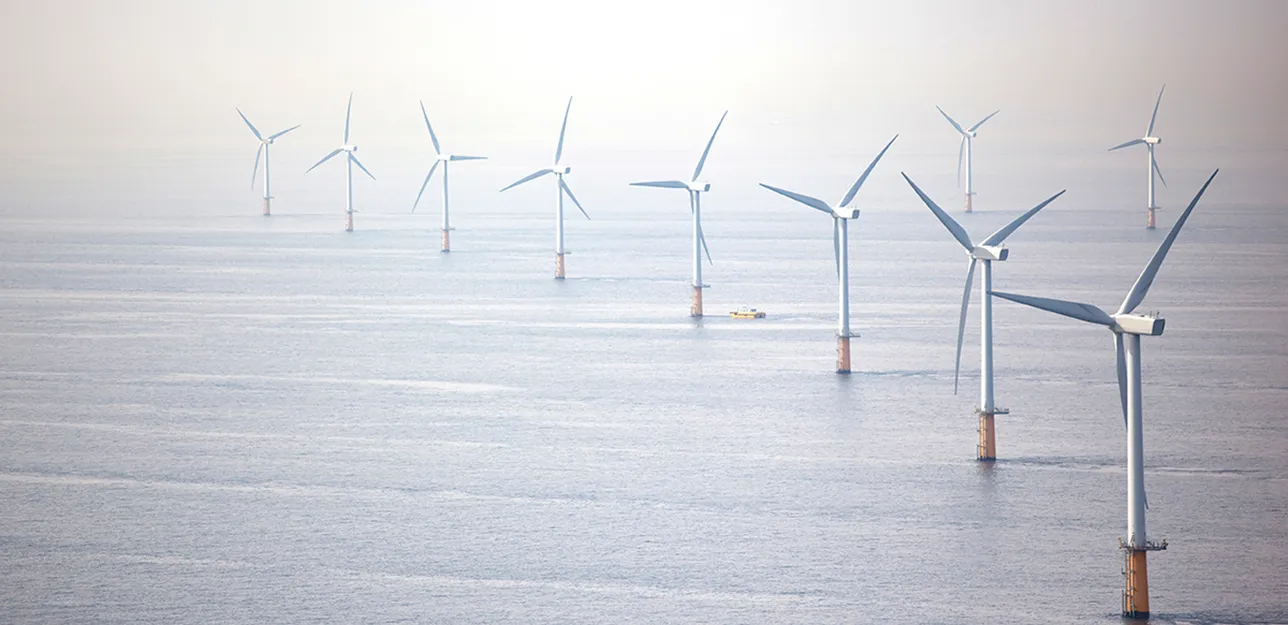The recently-announced White House plan to accelerate offshore wind development includes $3 billion in U.S. Department of Energy -backed loan guarantees via the Title 17 Innovative Energy Loan Guarantee Program through DOE’s Loan Programs Office.
The recently-announced White House plan to accelerate offshore wind development includes $3 billion in U.S. Department of Energy (DOE)-backed loan guarantees via the Title 17 Innovative Energy Loan Guarantee Program through DOE’s Loan Programs Office (LPO). These are not the first wind projects that would benefit from loan guarantees – the LPO has previously unlocked nearly $1.6 billion for onshore wind projects.
A Sea Change for Offshore Wind
The onshore Shepherds Flat wind project (845 MW, north-central Oregon, COD in 2012) received $1.3 billion in partial loan guarantees from the DOE LPO, facilitating investment by commercial banks and investors. Shepherds Flat was groundbreaking in terms of its size and remains among the largest onshore wind projects in the world. In line with the LPO’s ambitions, it helped accelerate the scaling-up of wind turbines and wind projects and enabled financial stakeholders to gain experience with the asset class that has benefited subsequent generations of onshore wind projects.
Offshore wind projects and the infrastructure required to manufacture, construct, and maintain them are significantly more capital-intensive than onshore, and as a result, require different financing arrangements and allocation of novel risks. Offshore wind turbines have massively increased in size in recent years, representing technology risk many lenders and investors would ordinarily balk at. Tax equity investors in offshore wind will be in the unfamiliar position (for wind projects) of monetizing the Investment Tax Credit (ITC) rather than the Production Tax Credit (PTC), requiring them to take on more construction risk than typical and commit farther ahead start of commercial operation. Despite a small number of demonstration offshore wind turbines in the U.S., and a thriving offshore wind industry in Europe, the U.S. industry has not yet proven its ability to successfully install and operate the full-scale projects currently in the development pipeline. Success of those projects depends on a broad range of factors, including many with little or no equivalence to onshore wind, such as vessel availability, port infrastructure capacity, and coastal interconnection options.
These factors signal an opportunity for the $3B in DOE loan guarantees for offshore wind to have a profound and outsized impact on major, early-mover offshore wind projects. By backstopping risk for commercial banks and investors, DOE can enable them to accrue technical familiarity, direct investment experience, and practical track record in offshore wind. At the same time, offshore wind turbine and related technology can demonstrate reliable track record at scale in the U.S. and risks related to ports, supply chain, vessels, and other infrastructure can be demonstrably addressed. These broad industry advancements are crucial to foster the same thriving project finance market for offshore wind as the onshore wind industry has enjoyed for years.
$3B by itself would pay for only a fraction of the 30 GW of offshore wind capacity. However, the confidence that could be inspired in the financial markets through judicious and successful deployment of these loan guarantees would have a multiplicative effect for offshore wind in the U.S., unlocking financing opportunities and advancing the industry far beyond the initial projects financed via the LPO.
Navigating the waters of the DOE LPO
DNV has had deep and long-standing involvement with the DOE LPO as an independent engineer, advising DOE and financial stakeholders on onshore wind projects. This has enabled us to accrue crucial experience relevant to offshore wind projects seeking to support financing through LPO offerings. Among those key lessons learned:
- DOE will drive the diligence: It is important to keep in mind that a core function of DOE loan guarantees is to backstop risk that commercial lenders are not positioned to bear—based on innovative technology or sheer project scale, for example. As a key stakeholder in the project, the DOE’s needs and priorities will heavily influence the due diligence scope, process, and timeline. In our experience, DOE will also insist on engagement of an independent engineer with whom it is fully comfortable as its independent technical advisor and will exercise discretion over the scope and priorities of IE work.
- Climbing the learning curve: While the DOE is certainly not new to offshore wind, the nuances involved in financing the construction and operation of these large projects will start out as new territory. In our experience, it is important that the Sponsors, DOE, and advisors work collaboratively to navigate the journey up this learning curve. Of note, DOE’s expertise and relationships to other key governmental stakeholders—namely, the Bureau of Ocean Management and the Army Corps of Engineers—may provide key added value to early, large-scale offshore wind projects in the U.S.
- Communication is key: The DOE is a strong and engaged partner. Frequent, transparent communication between the developer, DOE, financial stakeholders, and advisors is one essential ingredient to successfully managing this partnership. Equally important is a clear understanding of the roles of all parties involved.
About DNV
DNV has been involved in the offshore wind industry for more than 30 years starting with the first offshore wind projects installed in Europe and has performed a combination of lender’s and owner’s engineering services for over 50 GW of offshore wind projects.
Read the White House Fact Sheet here
Learn more about the LPO’s offer of $3 billion in debt capital here
Visit the DOE LPO website here

